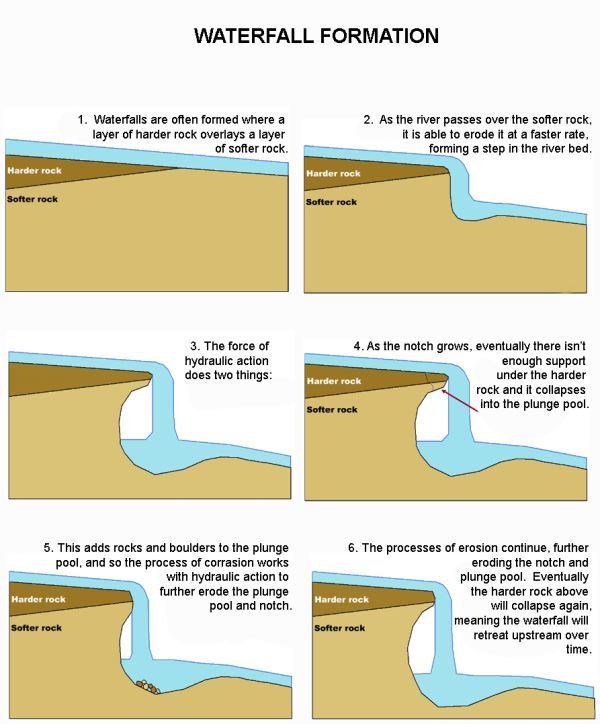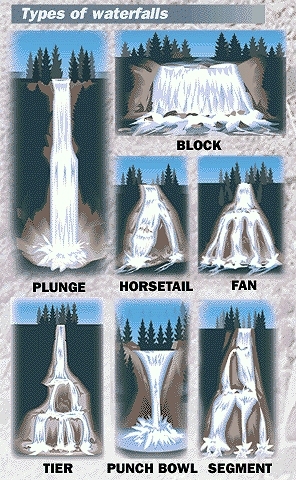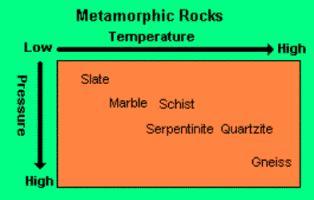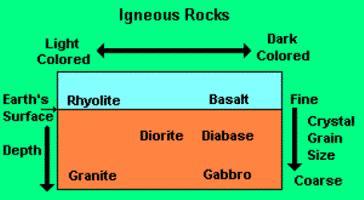PERMISSION:
This earthcache is placed with permission of the Assistant Park Manager, Fairy Stone State Park. It is one of the six original Virginia State Parks opening June 15, 1936. With 4,741 acres and 160 acre lake adjoining the Philpott Reservoir, Fairy Stone State Park is a great location for swimming, fishing, hiking, picnics, camping and wildlife viewing. Fairy Stone State Park is located at 967 Fairystone Lake Drive, Stuart, Virginia. There is a fee for park entry.
EARTHCACHE REQUIREMENTS:
Each cacher must send in their own answers when logging this find. After you arrive at the waterfall, enjoy the view and what you will bring home with you through this experience. Review the materials below and answer by message/email the questions to the best of your ability. Enjoy your time at this beautiful location. Please follow all logging requirements. Do NOT post answers in with your log.
ABOUT LITTLE MOUNTAIN FALLS: The coordinates for parking are for the convenience of those entering the park for the hike. Please pick up a trail map at the Park Office. There are maps available outside their door. Little Mountain Falls is a beautiful falls. It's appearance may change from season to season and with rainfall. It is fed from an unnamed tributary above the top of the falls. Please bring adequate water for hydration, dress for the weather and wear good hiking shoes. Please stay on the trail as the trail will bring you directly to the falls. Please follow all park rules and remember to use Leave No Trace ethics during your presence. Above all, maintain your safety. Wet rocks are slick, dangerous and losing footing can happen quickly.
WHAT IS A WATERFALL?
A waterfall occurs where a river or a stream flows over a large step in the rocks and loses elevation. Over a period of years, even thousands to millions, the edges of this shelf will gradually break away and the waterfall will steadily retreat upstream, creating a gorge of recession. As a stream flows, it carries sediment. The sediment can be microscopic silt, pebbles or even boulders. Sediment can erode stream beds made of softer rock, such as sandstone or limestone. Eventually the stream's channel cuts so deep into the stream bed that only a harder rock, such as granite remains. Waterfalls develop as these granite formations form cliffs and ledges. Often, the rock stratum just below the more resistent shelf will be of a softer type, meaning undercutting, due to splahsback, occuring here to form a shallow cave-like formation known as a rock shelter or plunge pool under and behind the waterfall. Eventually, the outcropping, more resistant cap rock will collapse under pressure to add blocks of rock to the base of the waterfall. These blocks of rock are then broken down into smaller boulders by attrition as they collide with each other. They also erode the base of the waterfall by abrasion, creating a plunge pool.
A stream's velocity increases as it nears a waterfall, increasing the amount of erosion taking place. The movement of water at the top of a waterfall can erode rocks to be very flat and smooth. Rushing water and sediment topple over the waterfall, eroding the plunge pool at the base. The crashing flow of the water may also create powerful whirlpools that erode the rock of the plunge pool beneath them.

CLASSIFYING WATERFALLS:
There is not a standard way to classify waterfalls. Some scientists classify waterfalls based on the average volume of water in the waterfalls. Another popular way to classing waterfalls is by width. Waterfalls are also classified by height. One of the most popular, if least scientific, ways to classify waterfalls is by type. A waterfall's type is simply the way the waterfalls descends. Most waterfalls fit more than one category. The types are:
BLOCK - water descends from a relatively wide stream or river
CASCADE - water descends a series or rock steps
CATARACT - a large waterfall
CHUTE - water traveling through a very narrow passage, forcing water through at an unusually high pressure
FAN - water spreads horizontally as it descends while remaining in contact with bedrock
HORSETAIL - descending water maintains some contact with bedrock
PLUNGE - water descends vertically, losing contact with the bedrock surface
PUNCHBOWL - water descends in a constructed form, then spreads out in a wider pool
SEGMENTED - distinctly separate flows of water form as it descends
SLIDE - water glides over a single slab of rock maintaining a smooth continuous contact
TIERED - water drops in a series of distinct steps or falls
VEIL - water travels over rocks creating a thin layer of water that just barely covers it's surface
MULTI-STEP - a series of waterfalls after another of roughly the same size with its own sunken plunge pool.
Drawing of several types of waterfalls (not all inclusive):

GEOLOGY:
Patrick County is one of the areas in Virginia where the Bassett Formation is present. This is comprised in part of biotite gneiss and granite gneiss. The town of Fayerdale, that now rests below the Fairy Stone State Park lake, was once a bustling iron mining community as a result of the incredible bounty of minerals that were in this immediate area.


Biotite gneiss is a rock-forming mineral found in a wide range of crystalling igneous rocks such as granite, diorite, gabbro, peridotite and pegmatite. It also forms under metamorphic conditions when argillaceous rocks are exposed to heat and pressure to form schist and gneiss. It is a common and widely distributed type of metamorphic rock. Gneiss nearly always shows a banded texture characterized by alternating darker and lighter colored bands.
Granite gneiss is a hard igneous rock that is mostly made up of feldspar and quartz. Granite has a crystalline structure and it can have a wide range of colors. The color of a granite rock is dependent upon the composition of minerals. Any igneous rock that contains one fifth of quartz is labeled as granite. Granite gneiss is formed from pre-existing ignous rocks such granite that has been subject to conditions of high pressure and temperature.
QUESTIONS TO BE ANSWERED:
1. Based on the lesson above, what type of waterfall are you observing?
2. Describe the appearance of the flow of water over the falls.
3. How do you think the weather has influenced the rate of flow?
4. Do you observe a plunge pool? If so, describe it and how deep to you think it may be.
5. Based on the lesson above, describe the type of rock that make up this falls.
6. Post a photograph at or near the falls (you do not have to be in the photo unless you want to). This is your log signature.
GINGIN'S MESSAGE:
L - Listen to the sounds of nature, a bird on wing or the sound of the wind
I - Investigate with the eye the beauty that surrounds you
T - Travel softly on this land to leave the least impact
T - Time well spent at a beautiful little falls
L - Lingering longer, where you can, to appreciate the trail you follow
E - Enjoy being with your family, friends, pets or even just yourself
M - Mountains offering gifts for the mind, spirit and eyes through it's majesty
O - Onlookers are we to apreciate the wonders of nature
U - Unparalled wildlife that depend on this land for its home
N - Nature abounding with wildlife on the land, in the water and in the air
T - Trails in this Virginia State Park are special because of stewardship preserving them
A - Always something new to see or be inspired by with each step on the we take
I - Inspiring places to rest and be in awe of the overlooks distant wonders
N - Never losing sight that we must each care for the land for our future generations
F - Falling water, graceful and with dignity
A - Aludes to marvel at the water passing over this falls, where it has been and going
L - Longing for more time to stay and appreciate this creation
L - Loving our Mother Nature for she provided this natural feature for each to enjoy
S - Sensing renewal from your hike to this wonderous falls
CONGRATULATIONS TO SKYHAWK63 FOR BEING FTF 9-2-21